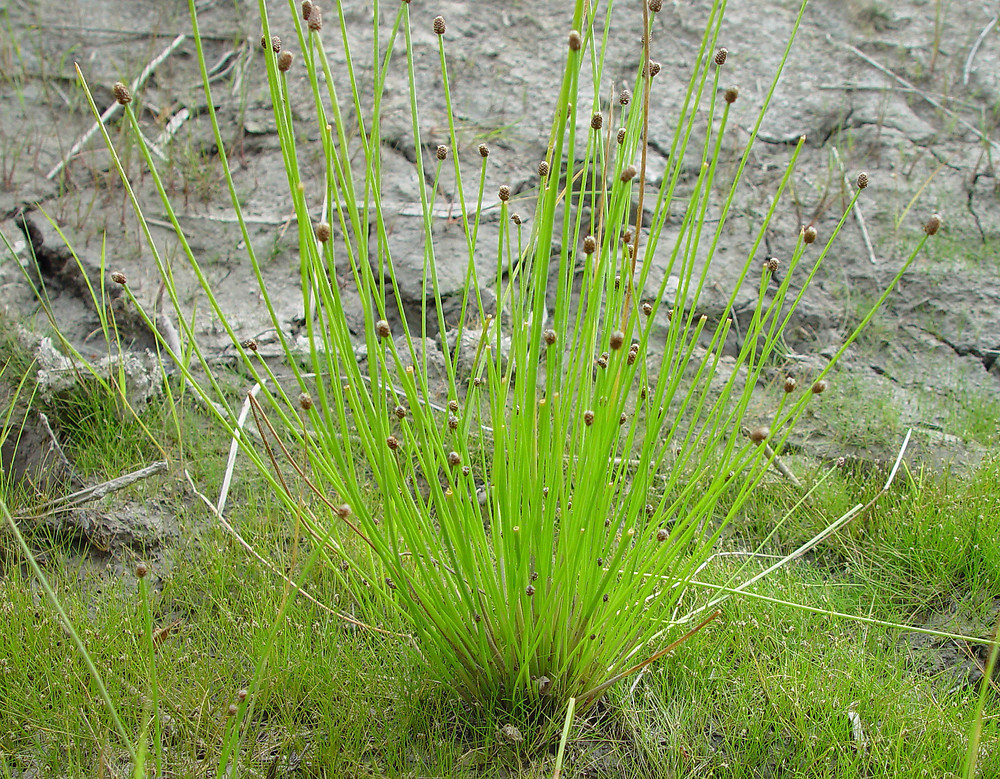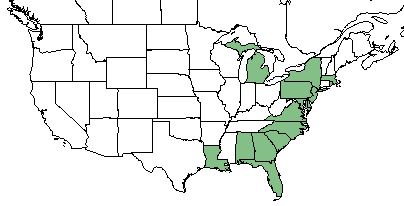Difference between revisions of "Eleocharis tricostata"
(→Distribution) |
|||
| Line 27: | Line 27: | ||
==Distribution== | ==Distribution== | ||
| + | This sedge ranges from Massachusetts to Florida with sporadic occurrences inland in Michigan.<ref name="Ward & Leigh 1975"/> | ||
| + | |||
==Ecology== | ==Ecology== | ||
===Habitat=== <!--Natural communities, human disturbed habitats, topography, hydrology, soils, light, fire regime requirements for removal of competition, etc.--> | ===Habitat=== <!--Natural communities, human disturbed habitats, topography, hydrology, soils, light, fire regime requirements for removal of competition, etc.--> | ||
Revision as of 16:03, 5 December 2017
| Eleocharis tricostata | |
|---|---|

| |
| Photo by © Arthur Haines, New England Wild Flower Society | |
| Scientific classification | |
| Kingdom: | Plantae |
| Division: | Magnoliophyta - Flowering plants |
| Class: | Liliopsida - Moncots |
| Order: | Poales |
| Family: | Cyperaceae |
| Genus: | Eleocharis |
| Species: | E. tricostata |
| Binomial name | |
| Eleocharis tricostata Torr. | |

| |
| Natural range of Eleocharis tricostata from USDA NRCS Plants Database. | |
Common names: three-angle spikerush[1][2]
Contents
Taxonomic Notes
Synonyms: Scirpus tricostatus (Torrey) Kuntze, Trichophyllum ticostatum (Torrey) House[3]
Description
Eleocharis tricostata is a perennial, monoecious, graminoid sedge.[2]
Distribution
This sedge ranges from Massachusetts to Florida with sporadic occurrences inland in Michigan.[4]
Ecology
Habitat
E. tricostata is an obligate wetland species[2] found in wet pine savannas, bogs,[1] wet soil of pond margins, and infrequently in saline marshes.[4]
Phenology
It flowers and fruits between July and September.[1]
Conservation and Management
Cultivation and restoration
Photo Gallery
References and notes
- ↑ 1.0 1.1 1.2 Weakley A. S.(2015). Flora of the Southern and Mid-Atlantic States. Chapel Hill, NC: University of North Carolina Herbarium.
- ↑ 2.0 2.1 2.2 USDA, NRCS. (2016). The PLANTS Database (http://plants.usda.gov, 5 December 2017). National Plant Data Team, Greensboro, NC 27401-4901 USA.
- ↑ Wunderlin R. P., Hansen B. F., Franck A. R. and Essig. F. B. (2017). Atlas of Florida Plants (http://florida.plantatlas.usf.edu/).[S. M. Landry and K. N. Campbell (application development), USF Water Institute.] Institute for Systematic Botany, University of South Florida, Tampa.
- ↑ 4.0 4.1 Ward D. B. and Leigh E. M. (1975). Contributions to the Flora of Florida: 8, Eleocharis (Cyperaceae). Castanea 40(1):16-36.